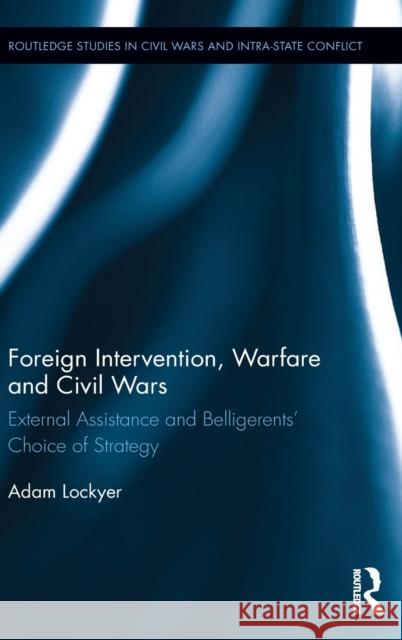Foreign Intervention, Warfare and Civil Wars: External Assistance and Belligerents' Choice of Strategy » książka
Foreign Intervention, Warfare and Civil Wars: External Assistance and Belligerents' Choice of Strategy
ISBN-13: 9781138084575 / Angielski / Twarda / 2017 / 238 str.
Foreign Intervention, Warfare and Civil Wars: External Assistance and Belligerents' Choice of Strategy
ISBN-13: 9781138084575 / Angielski / Twarda / 2017 / 238 str.
(netto: 670,84 VAT: 5%)
Najniższa cena z 30 dni: 654,86
ok. 22 dni roboczych
Dostawa w 2026 r.
Darmowa dostawa!
This book develops a theoretical understanding of foreign intervention on the warfare in civil wars. Warfare in civil wars is far more dynamic than in international wars. To date there is a paucity of research on the nature of warfare in civil wars. Within a single civil war, the predominant type of warfare may change over time or between regions. This book fills this gap. It establishes how the military balance of power between the contending sides in a civil war shapes the type of warfare that develops. It shows that this warfare is often highly fluid, with belligerents adapting their respective strategies in response to shifts in the balance of military capabilities. There is one important exception. Historically, belligerents have found the transition from guerrilla to conventional far more difficult than conversions between other types of warfare. This book represents the first attempt to show how external actors can shape the warfare that emerges at particular places and times. It argues that the injection of external sources of finance, training, weapons or troops can affect the military balance, which in turn can change the mode of warfare. Yet, not all recipients receive the same boost from similar amounts of external support. Some recipients receive massive quantities to little effect, while others obtain very limited aid and use it to disproportionately great effect. An organisational approach is employed to show why some civil war belligerents are better than others at converting external assistance into military effectiveness. These arguments are empirically tested against the Angolan and Afghan civil wars in the 1970s and 1980s. In each case, temporal and spatial variation in the type of warfare is shown to closely align with the type, degree, and direction of foreign intervention. The findings presented in this book offer key insights for policy-makers to navigate the increasing internationalization of civil wars around the globe. This book will be of much interest to students of civil wars, intra-state conflict, war and conflict studies, and security studies.











